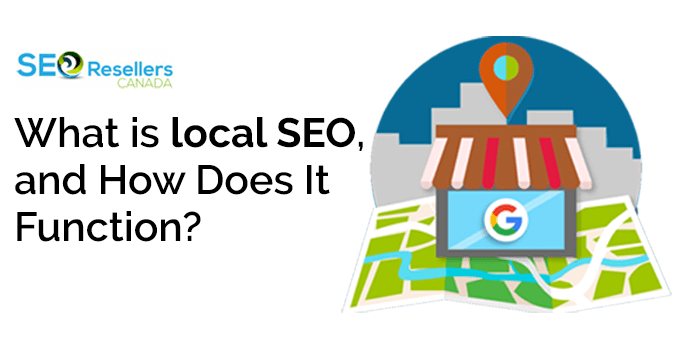YouTube is both the largest video-sharing site and the second-largest search engine. Without YouTube, you’re missing out on a huge opportunity to advertise your company. YouTube’s advertising alternatives for large and small businesses have different prices.
With 2.1 billion monthly users, YouTube is huge. They watch almost an hour of YouTube videos on their phones daily. As Smart TV sales have soared, so have YouTube views on TVs. One cannot ignore that YouTube’s search engine ranks second only to Google in traffic. Google Ad Words has made YouTube a global advertising platform, which is no surprise.
YouTube advertising expenses in social media solutions depend on ad structure, targeting, and competition. True View, Non-Skippable, and Bumper advertising are the main YouTube ad categories. True View advertisements average $0.10–$0.30 for each view. Audience demographics, industry, and targeted specificity affect expenses.
The price structure, services offered, and YouTube ad types might affect a digital marketing agency’s YouTube advertising costs. Service costs encompass strategy, campaign management, and creative creation; agencies charge ad expenditure. Management fees are typically $500 to $3000 monthly, while ad spend budgets vary on objectives and audience size. Working with a digital marketing firm provides experience but demands campaign-specific costs.
1- How does YouTube advertising get priced?
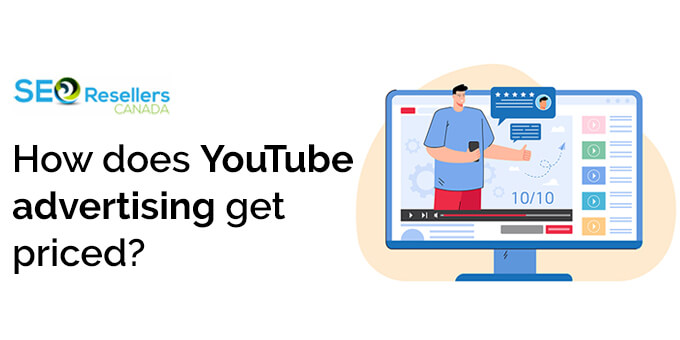
YouTube uses CPC and CPV pricing methods like Google, its parent.
1.1- Pay-per-click adverts
CPC advertising requires payment whenever a user interacts with the ad. You place a “max. CPC” bid for “maximum cost per click.” The maximum amount you are ready to pay whenever one of your ads is clicked.
1.2- Paid Advertisement
Commercials that charge per watch are “pay to view.” A view is logged whenever a user watches at least 30 seconds (or the whole duration, if less) of your video ad or engages with it in another way. An example of a video interaction is clicking on a call-to-action overlay, a card, or a companion banner. You may tell Google your maximum CPV offer by setting up CPV bids.
This method of charging means that the cost of your YouTube ads will depend entirely on how viewers interact with them. Whether you pay per-view or click depends on the sort of advertising campaign you launch.
2- If you want to advertise on YouTube, how much would it cost?
YouTube ads cost $0.0010–$0.0030 for every view or click. This means reaching 100,000 viewers costs $10,000–$30,000.Companies typically spend $10 or more each day on YouTube ads. A corporation may increase this daily spend as it evaluates its movement.
YouTube ads typically cost this, although prices vary. YouTube advertisements cost different amounts depending on video quality, target market, and campaign objectives. Return on investment and cost per view must be considered when designing YouTube advertising. Campaign expenditure limits are necessary to reduce expenses. Next, check your progress to verify you’re meeting your YouTube advertising goals and utilizing your money appropriately.
3- Where do YouTube ad prices come from?
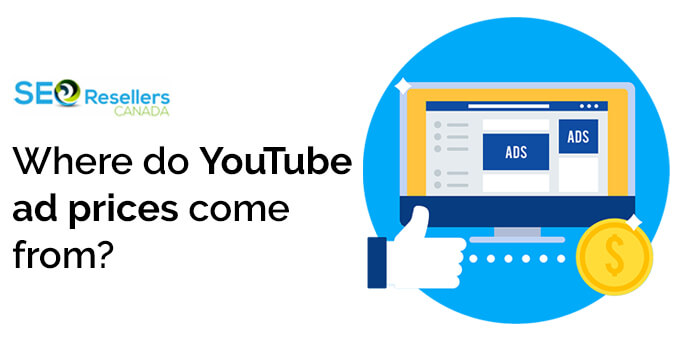
Ad prices on YouTube may vary widely depending on a number of factors, as we discussed above. However, the price of a YouTube ad depends on a number of different criteria. Let’s go further into each of them below.
3.1- YouTube ad format
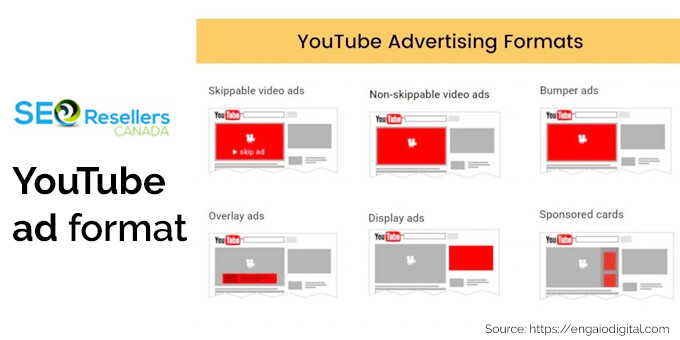
There is a wide range of ad formats and prices available on YouTube. Larger ad slots and higher levels of exposure often command more rates. You may choose from a wide variety of ad styles on YouTube, such as:
3.1.1- Display ads
Typically, these advertisements will appear to the right of the leading video and above the recommended videos on a YouTube page.
3.1.2- Overlay ads
Pictures or text advertising takes up 20% of the video’s bottom screen. When advertising pops up over the content, the user may dismiss them by clicking the “X” in the upper right.
3.1.3- Skippable in-stream ads
These commercials play before, during, or just after a video and may be skipped after 5 seconds. Banner ads dominate YouTube’s advertising landscape.
3.1.4- Non-Skippable in-stream ads
These commercials must be seen before the main content can be accessed. The average length of a video that cannot be skipped is 15–20 seconds.
3.1.5- Bumper ads
These commercials may last up to six seconds. You have to watch them first if you want to see the actual videos. Their brevity allows them to convey their essential idea clearly and quickly.
3.1.6- Video discovery ads
These advertisements appear as suggestions in the right-hand sidebar of search results or the site’s homepage.
3.1.7- Sponsored cards
The video’s essential information is here. This kind of advertising may boost film product sales. Show your audience a quick product promotional card to catch their attention.
3.1.8- Masthead ads
Exclusive digital billboards on YouTube’s first page are up and running every day. They are reserved for more financially stable enterprises, thus in high demand.
Ad formats and marketing budgets are inseparable and must be carefully managed. Seek expert marketing advice if you are unclear which YouTube ad format will work best for your campaign.
3.2- Your targeting options
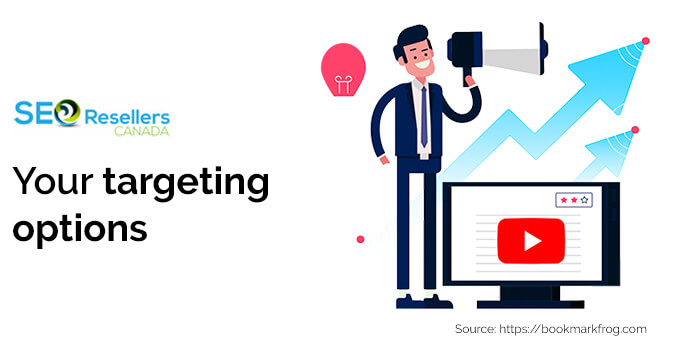
YouTube’s value comes from reaching a certain demographic at a specific time and place.
Google adverts also help spread YouTube video adverts around the web. By tailoring your YouTube ad campaigns, you can ensure that your ads will be shown to users identified as qualified leads based on their demographic information or online activities.
Depending on your audience’s location, interests, and preferred media formats, you may use various tailored strategies to communicate with them. Engagement may also be measured by launching advertisements targeting different demographics and studying the outcomes.
The broad demographic you target determines how much you pay for YouTube advertising. Be careful about your target audience to avoid overspending on marketing. You might expect to spend more to reach the same consumers as many of your rivals. This is because more companies are vying for the same advertising space.
3.3- Ad placement bidding
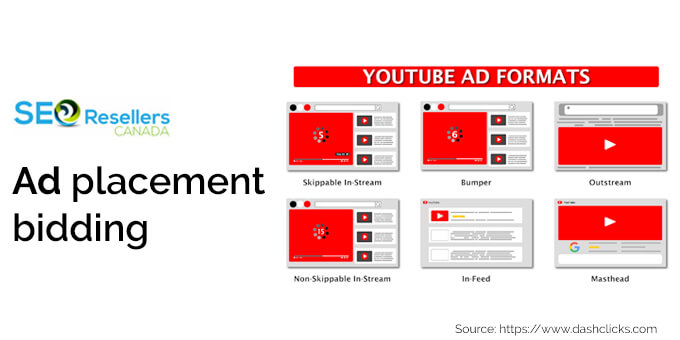
Your YouTube advertising budget depends on how much you’re ready to spend for a place.
YouTube ads are auctioned to the highest bidder. The amount of people vying for the same area will determine your ad’s pricing. Targeting is crucial when choosing a YouTube ad bid.
BID measures include cost per view (CPV) and cost per thousand (CPM). This means you won’t be paid until 30 seconds pass or the user acts on your ad. A view is when someone sees your 30-second ad in its whole.
Specific adverts may be bought on a PPC basis. This kind of advertising only charges those who click. You may also pick your ideal daily spending limit. This prevents unpleasant surprises if more people view your ads than expected. Additionally, select a maximum CPM bid. YouTube will tell you a typical price range based on your targeting.
4- How to create a YouTube advertisement that maximizes your budget
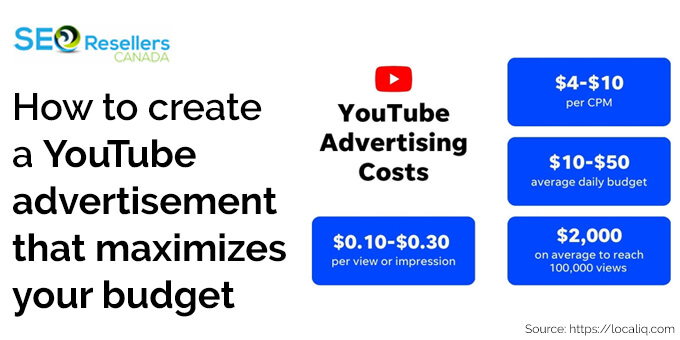
Advertising on YouTube may significantly affect the amount of exposure your company receives. Here are some things you can do to make your YouTube advertising more effective and save money.
4.1- Determine the leadership of your campaign

Creating a video advertising campaign requires time and effort. For your YouTube marketing campaign to succeed, recruit the right people. You may create and promote ads. Marketing employees may create and manage corporate ads.
If you’re doing everything yourself, budget appropriately. If you pay for a 30-second view of a one-minute ad, compute the worth of that view. Your corporation must decide whether a click is worth $1 or $0.50.
Some companies outsource video advertising to agencies. This is a good option if you’re too busy running your business to study video marketing. A video marketing firm costs hundreds to thousands of dollars. Duration, script word count, camera angles, and more will affect your video’s costs.
4.2- Determine your audience
Your advertisement’s target audience is who you want to see. Knowing your audience is essential for a successful marketing effort. You may reach out to your ideal customers in a number of ways. Some examples:
- Population segments : Age, gender, wealth, and family position are all examples.
- Interests : What your viewers want to see when they watch videos on YouTube.
- Remarketing : Advertising to viewers depending on how often they’ve seen your videos.
- Topics : Depending on the queries they use to explore YouTube, you may narrow focus on specific audiences.
- Keywords : Displaying advertisements on YouTube in response to user searches for specific terms.
All other choices for your company have already been listed. Choose the best format for your company depending on your needs, objectives, and available resources.
4.3- Create engaging video advertisements
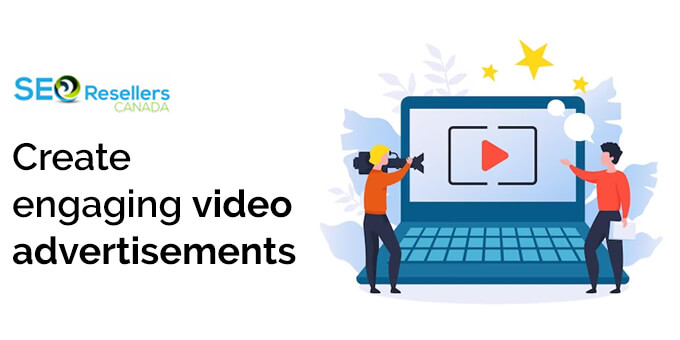
The success of your YouTube ad will depend on the quality of the material you upload. You need eyeballs on your ad and clicks on your content. You need to put effort into making a high-quality video for it to occur.
To begin, you’ll need to make a professional-caliber video. A low-quality, shakily-filmed video is not something you want people to see. As video production techniques improve, you should be able to make more professional advertising.
Your YouTube commercial should also be helpful to viewers. Showing people why they should do business with you is essential if you want to make an impression.
Planning the content of your YouTube ads guarantees that they are engaging and informative for your target audience. Determine what you want to accomplish with your YouTube commercial, and then provide an ad that will assist you in doing just that.
4.4- Make your adverts concise
The longer your advertisement is, the more likely people will avoid it. This is a common problem with videos that cannot be skipped. People are likelier to tune out a protracted video that can’t be ignored.
Making concise and compelling films can boost your campaign’s success. Your video’s optimal length is 45 seconds or less. You’ll have enough time to make a professional-standard video without it going on for too long.
You must get your message through fast. If a viewer may leave your video after only five seconds, you have very little time to make an impact. It’s crucial to be direct and brief.
4.5- Construct applicable landing pages
If you’re promoting anything, it’s important to send people in the right direction. The goal is to send them to a landing page elaborating on the ad’s claims.
You may send visitors to a specified landing page by running intelligent advertising campaigns.
That provides valuable insight into your company’s products and services. You must design a dedicated landing page for your campaign to get the most out of your YouTube ad’s conversion potential.
People interested in what you offer may click on your landing page if they like what they see in your ad. It’s a fantastic method for attracting qualified visitors to your site.
4.6- Keep an eye on your campaigns
You need to monitor the stats to know how well your campaign is doing. Distributing high-quality promotional material can help your company thrive.
You can track your YouTube advertising campaign’s success using various measures. Views, likes, shares, and subscriptions are some of the indicators you can keep an eye on. To get a deeper understanding of your campaign, you may also see data as it is being collected.
You may get more significant outcomes for your company if you keep tabs on your marketing. Your YouTube ad will be more powerful, bringing in more customers and expanding your company.
5- Conclusion
Advertising campaigns on YouTube are a fantastic method to expose your company to new customers and raise its profile. If you have access to an advertising budget, you should utilize it to create an engaging commercial that will increase brand recognition and click-through to your website.
Brands may anticipate spending anything from $0.10 to $0.30 per view or per click on YouTube videos, on average. Ad format, intended audience, and competitive bidding are a few variables that might impact the final price. To maximize your YouTube advertisement’s return on investment (ROI), it is essential to do as much research as possible in advance.
Editor’s Note: This post was originally published on December 17, 2019, and has been completely revamped and updated for accuracy and comprehensiveness.















